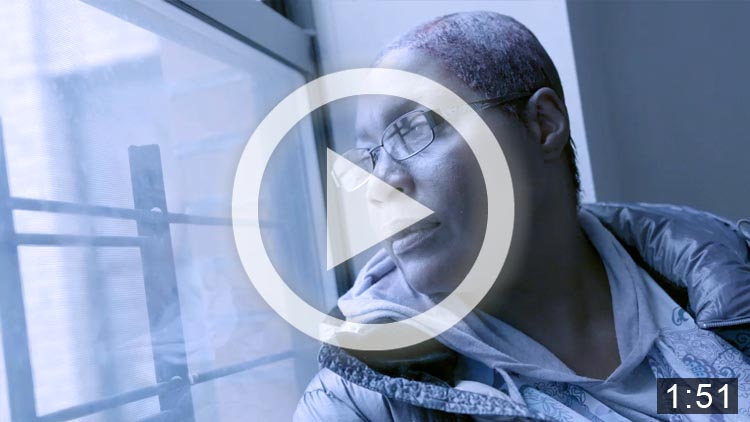

Thousands of Working New Yorkers Are Living in Homeless Shelters
Soaring rents and stagnant wages increasingly have squeezed the city’s working poor.
BY MARA GAY
APRIL 10, 2017
Donna Morgan is dreaming about shrimp and okra, deviled eggs with onions, and porgy.
It has been a long day at work, and the 51-year-old Manhattan health aide is yearning for the taste of home.
Instead, she likely will pick up some fast food and return to the Lower East Side homeless shelter where she has lived since October.
“I’m working from 8 to 8, 12 hours a day, but I can’t afford the rent,” says Ms. Morgan, who works two jobs and earns about $2,100 a month. “Simple as that.”
Ms. Morgan is one of thousands of people in New York City who work but are homeless. Many are employed in low-paying jobs in the service industry that are crucial to keeping the New York economy humming. About 13.5% of jobs in the city pay minimum wage, according to an estimate from the Comptroller’s office, or $11 an hour for workers at businesses of at least 11 employees.
The combination of soaring real-estate prices and stagnant family incomes have squeezed New York’s working poor. Rents surged nearly 20% in real dollars from 2000 to 2014, while household income decreased by 6.3%. The number of people living in New York City shelters skyrocketed to more than 60,000 late last year, up from 31,009 in 2002. The rise in the working homeless is a big reason why.
“When I first began representing homeless people years ago it was rare,” said Steven Banks, who oversees the city’s homeless programs as commissioner of its Human Resources Administration. “Now, working families constitute a significant part of the shelter system.”
Of the roughly 40,000 families with children living in shelter in New York City, 34% have earned income. Thousands more single adults and adult families in the system also have paying jobs.
It isn’t just a New York problem. Other cities, particularly in high-rent areas in California, are spending more to fight homelessness.
In Los Angeles, the number of homeless individuals rose 11% to 28,000 last year. Although they don’t keep data on the percentage of homeless who are employed, city officials said they believed a sizable number of working poor in the city have begun living in cars or in shelters.
In New York, the working poor are on the losing end of the city’s turnaround, a 20-year resurgence in which a steep drop in crime and a strong economy have enticed record numbers of people to move to the city.
As rents soar in low-income neighborhoods such as East New York in Brooklyn, a place once thought to be immune to the forces of gentrification, the working poor who could once afford housing there suddenly are finding it out of reach.
The math is dizzying: Some 865,000 New York City households earned $25,000 or less annually in 2014—a group that can afford about $613 a month in rent and utilities, according to the city. In 1999, there were about 18,000 apartments on the market at or below that rent. In 2014, as homelessness surged, there were 2,662, city data show.
“For every apartment available at $1,000 there are 10 families looking,” said Lilliam Barrios-Paoli, a former deputy mayor under Mayor Bill de Blasio who oversaw homelessness before she resigned in 2015. “If you make minimum wage, where do you live?”
Lucy Sanchez, 49 years old and a mother of three, earns $11 an hour working retail at MyUnique, a thrift store in downtown Brooklyn.
Ms. Sanchez was evicted from an apartment in the city’s public-housing system in 2012. City officials said she was five months behind on rent. Recently, she said she thought she had paid what she owed, and was still confused about the eviction.
Ms. Sanchez and her youngest daughter, who is 7, live in a homeless shelter in Manhattan. Despite making daily calls to search for apartments, she has yet to find anything she can afford.
“Sometimes I feel like I’m stupid,” she said. “I made six phone calls the other day to real-estate people for affordable housing. The intern gives you another number, and you call that number and they tell you, ‘We’re not giving out applications right now.’ ”
Ms. Morgan, the home-health aide, said she became homeless in 2014 when she gave up the Harlem apartment she had rented for $1,500 a month. She said an acquaintance told her she could move into a brand-new apartment nearby for just $400 a month.
Ms. Morgan, who was then spending about 75% of her income on rent, decided to move to the new apartment. But after paying a $1,500 security deposit, she said that she learned she had been scammed.
“There was no apartment,” she said. “I was devastated.”
Ms. Morgan has been in a homeless shelter since then.
Later this spring, Ms. Morgan expects to move into a Bronx apartment, a unit that Picture the Homeless, an advocacy group, helped her secure.
After nearly three years living in a shelter, Ms. Morgan will be able to host her three sons and two granddaughters in her own home. She says she plans to cook for them the way her mother did—whipping up collard greens in the three-bedroom apartment the family rented for years at $20 a month in Harlem.
Ms. Morgan said she tried to leave the city nearly a decade ago for South Carolina in search of a lower cost of living, but soon returned.
“I couldn’t be without…all the different people, even the firetrucks,” Ms. Morgan said. “I was born here.”




